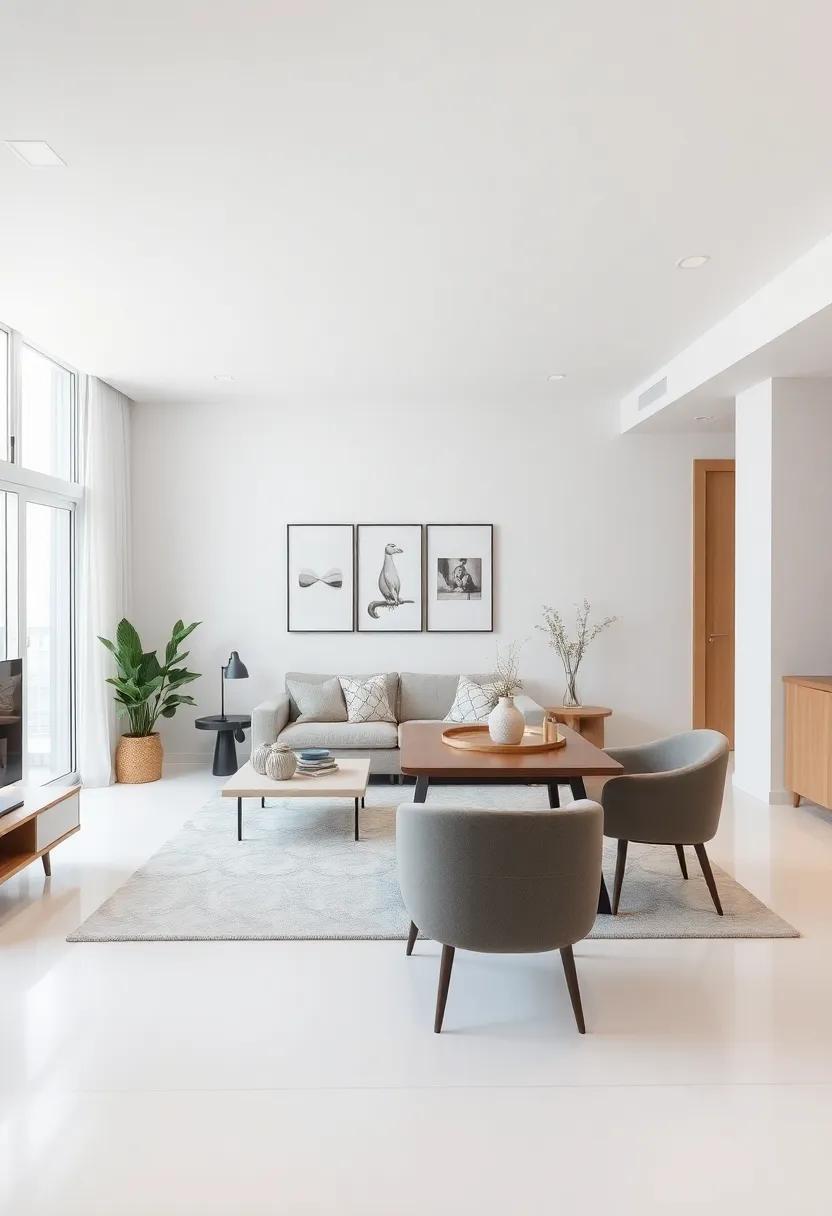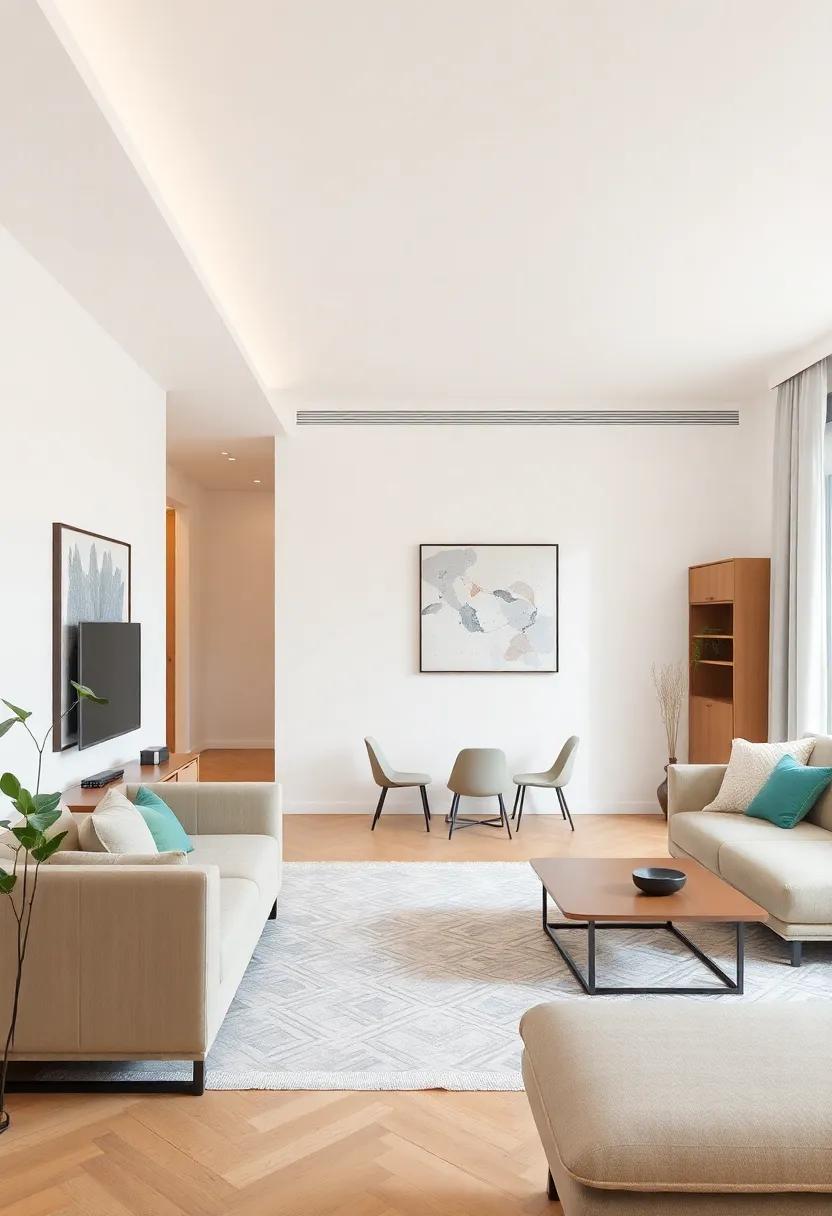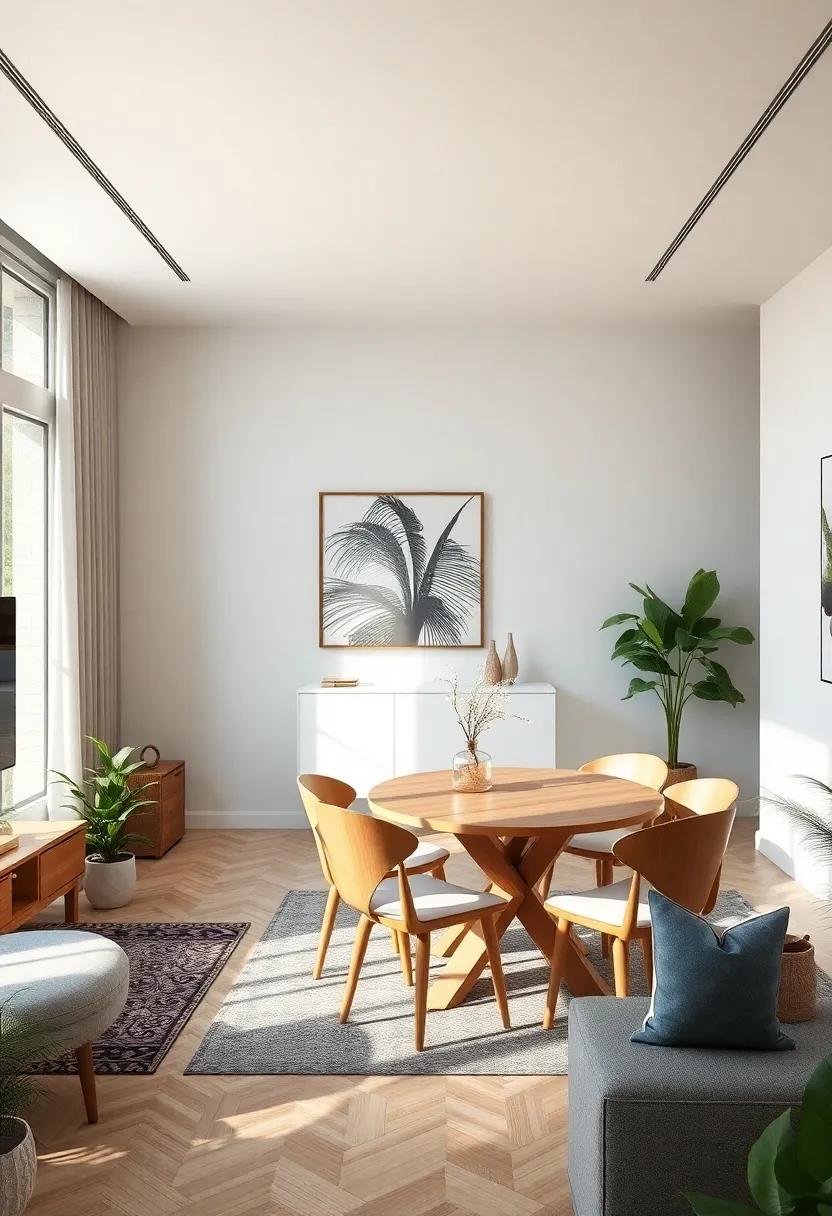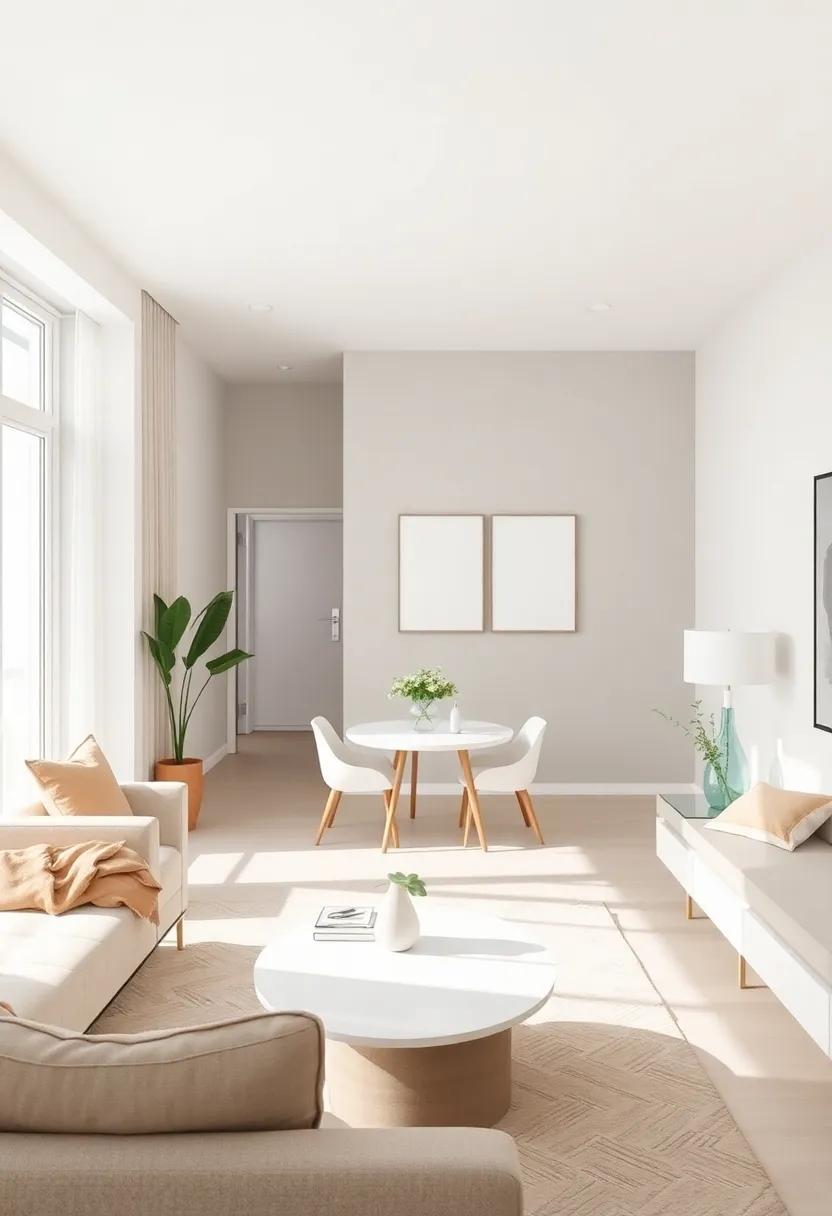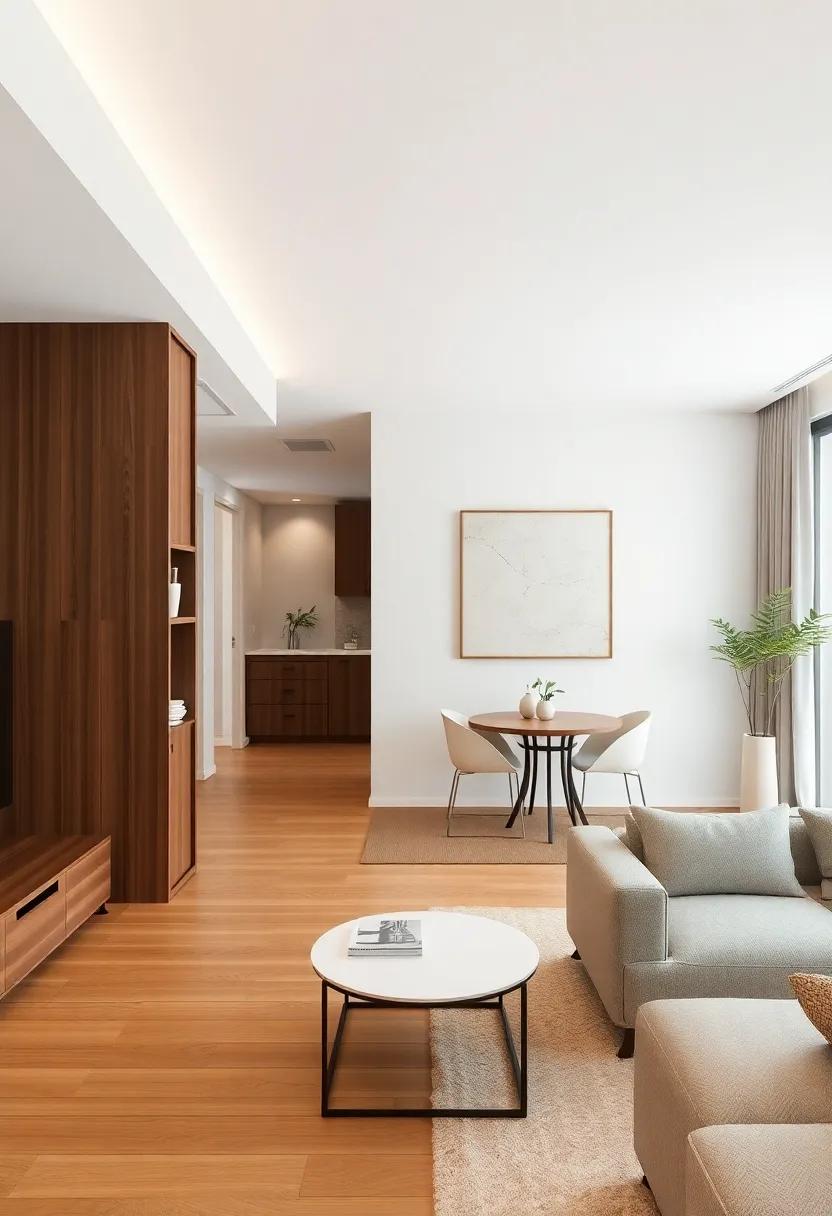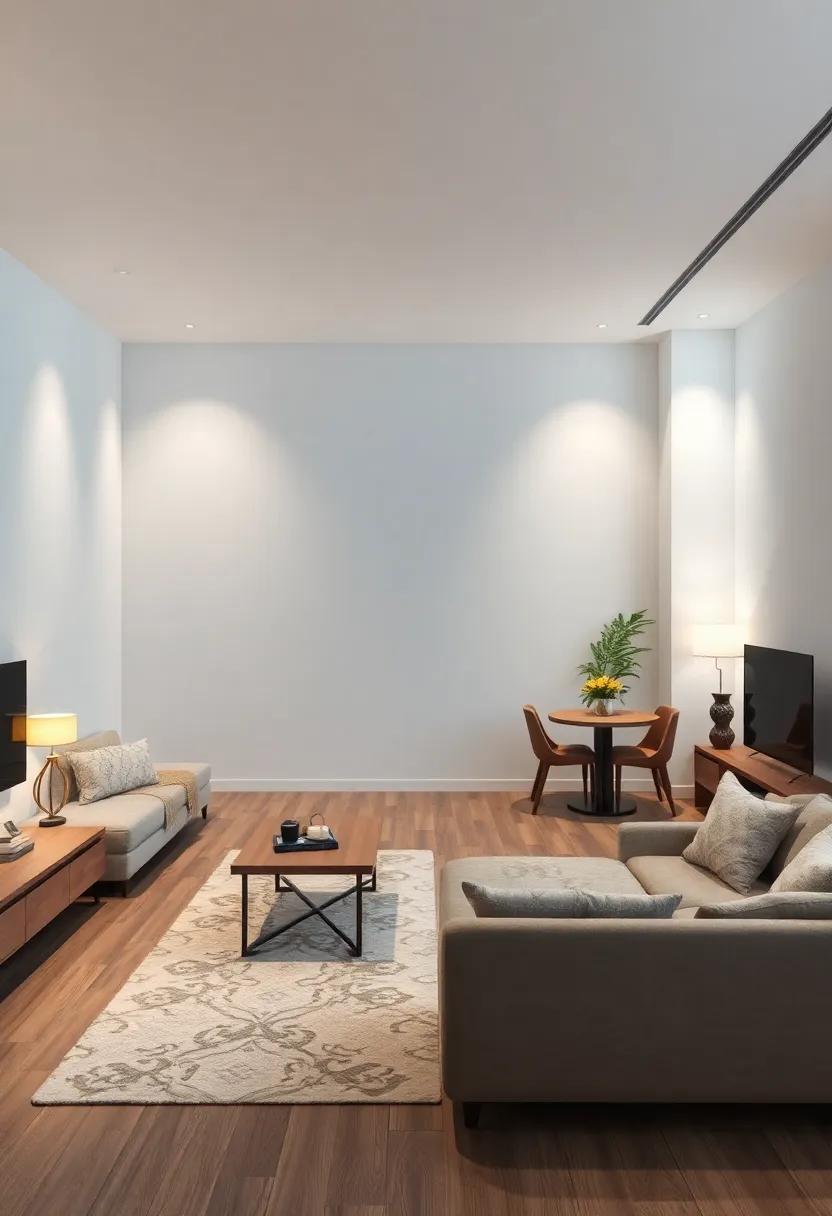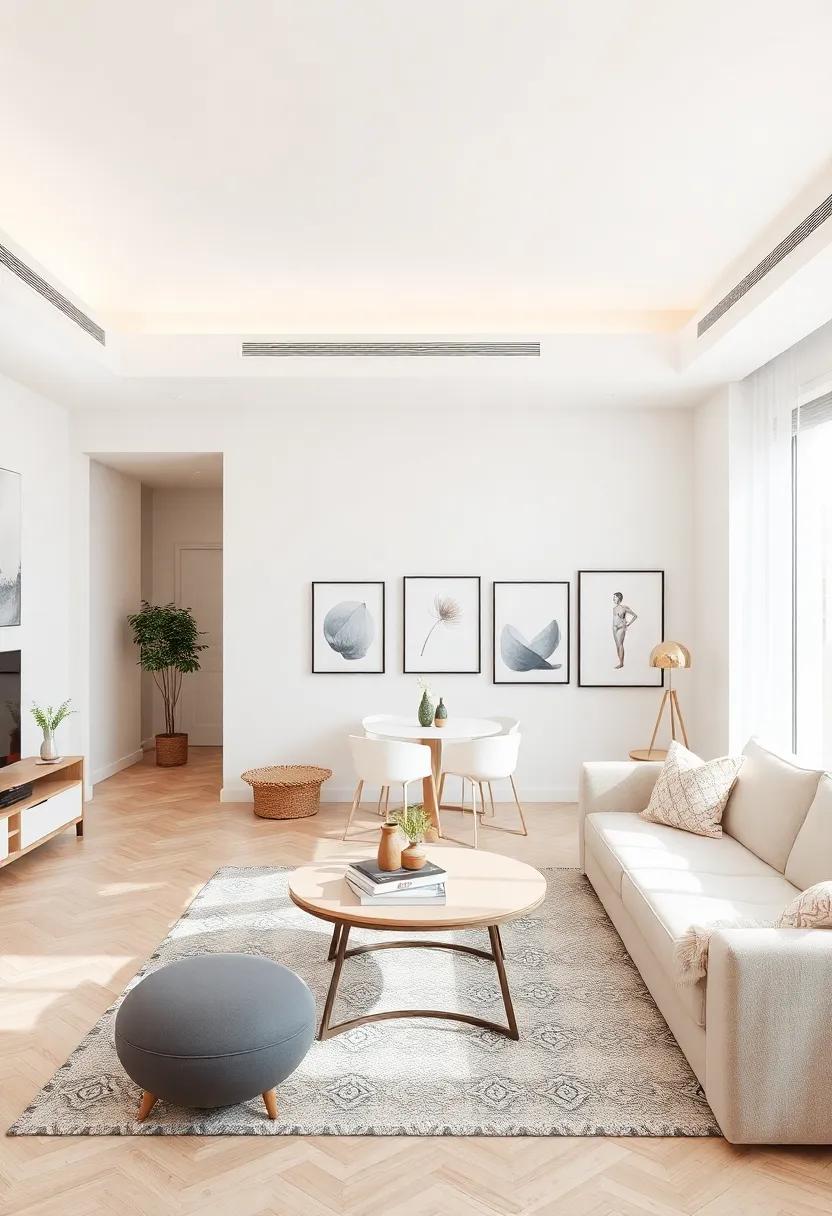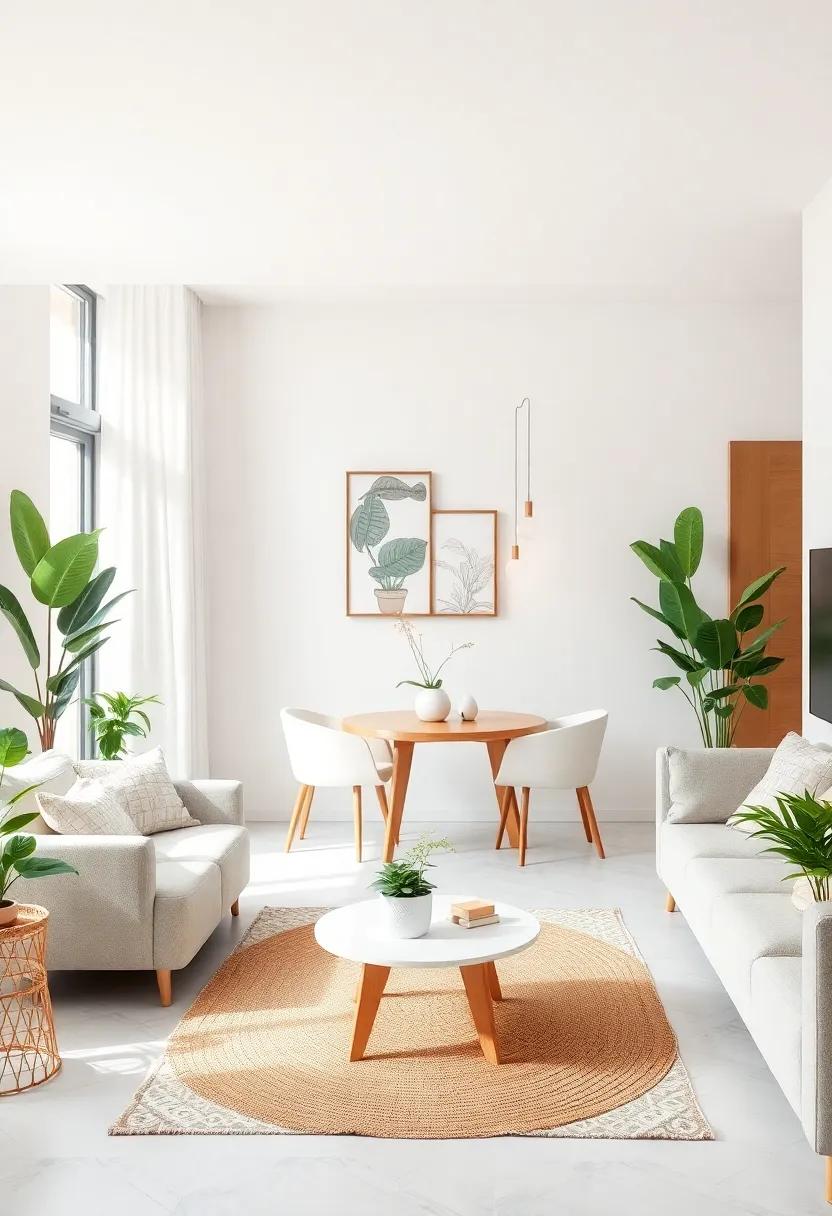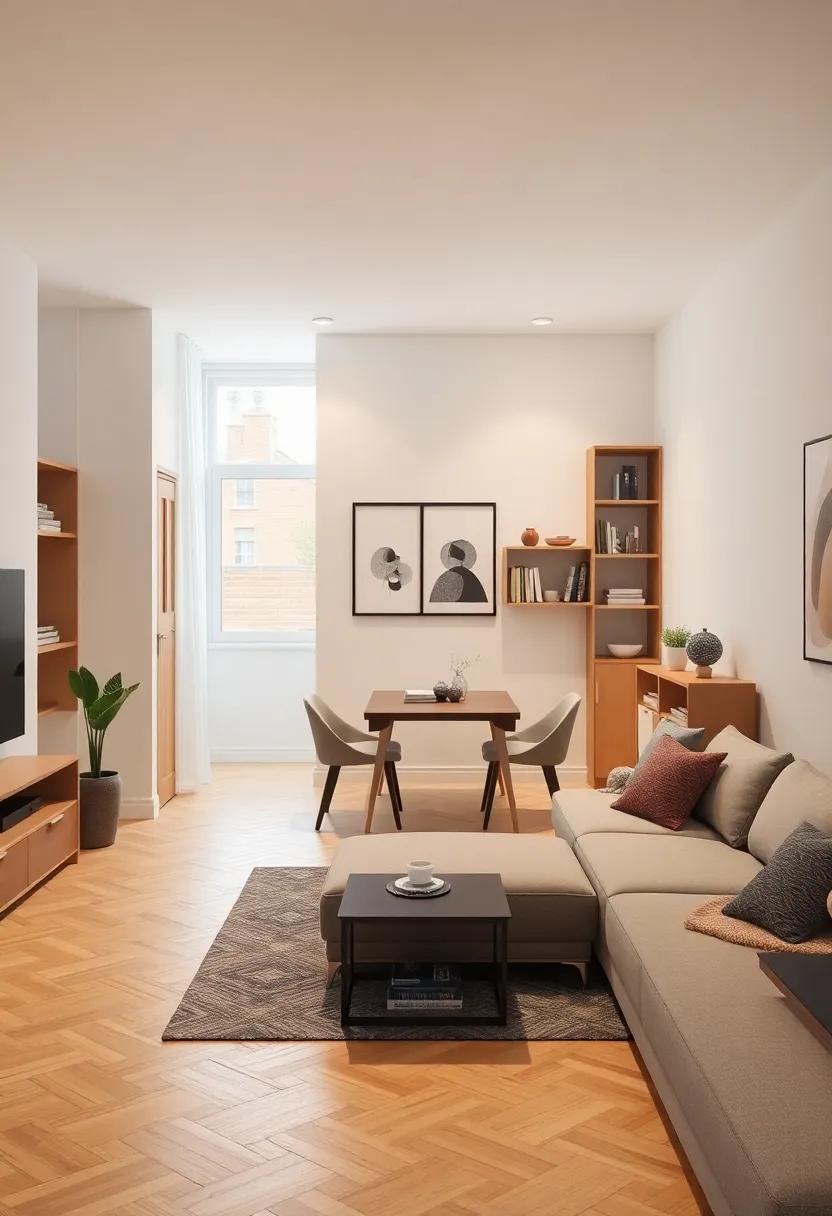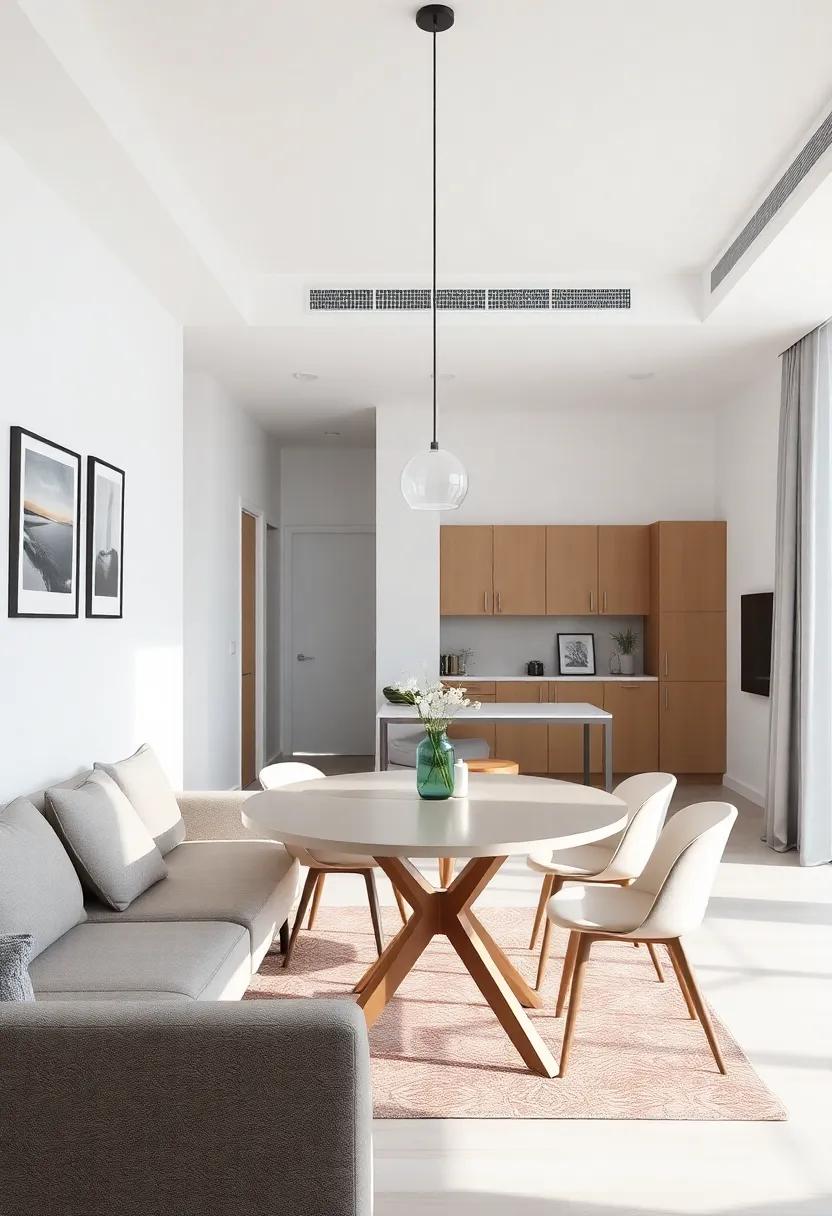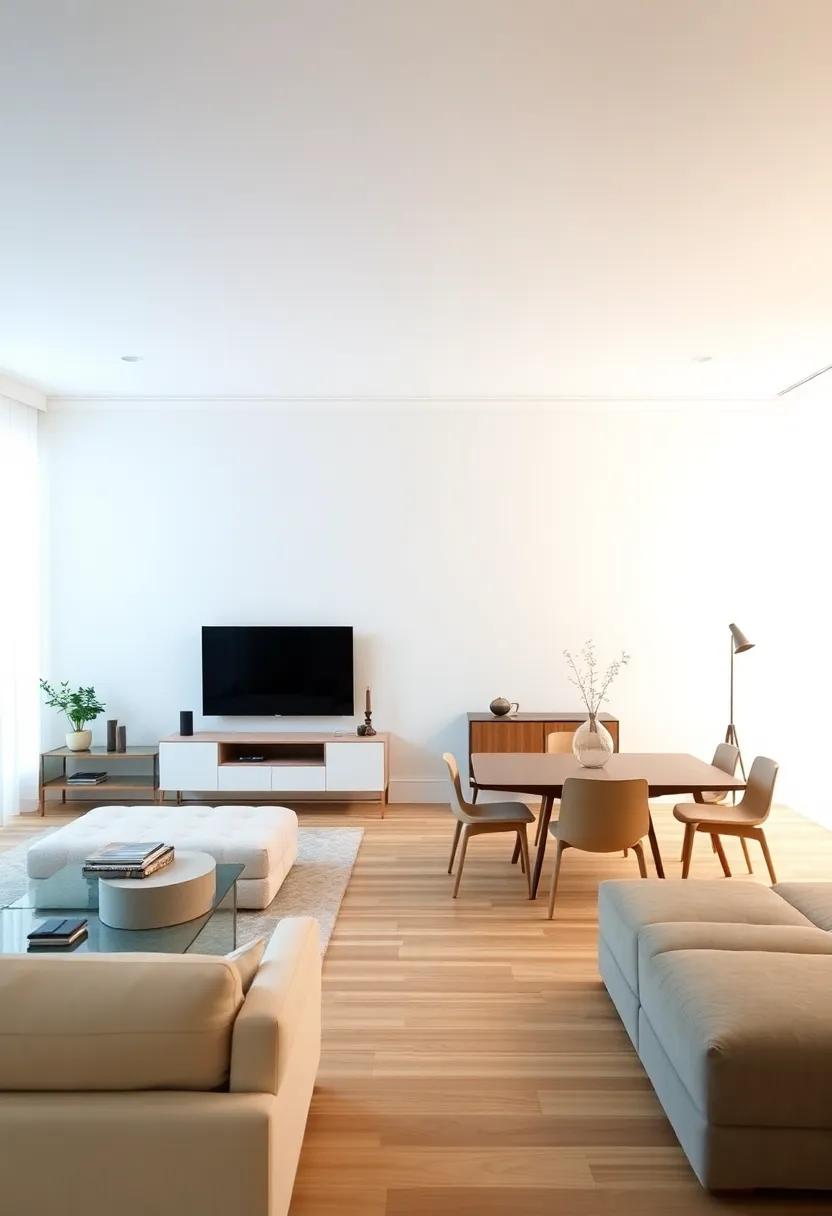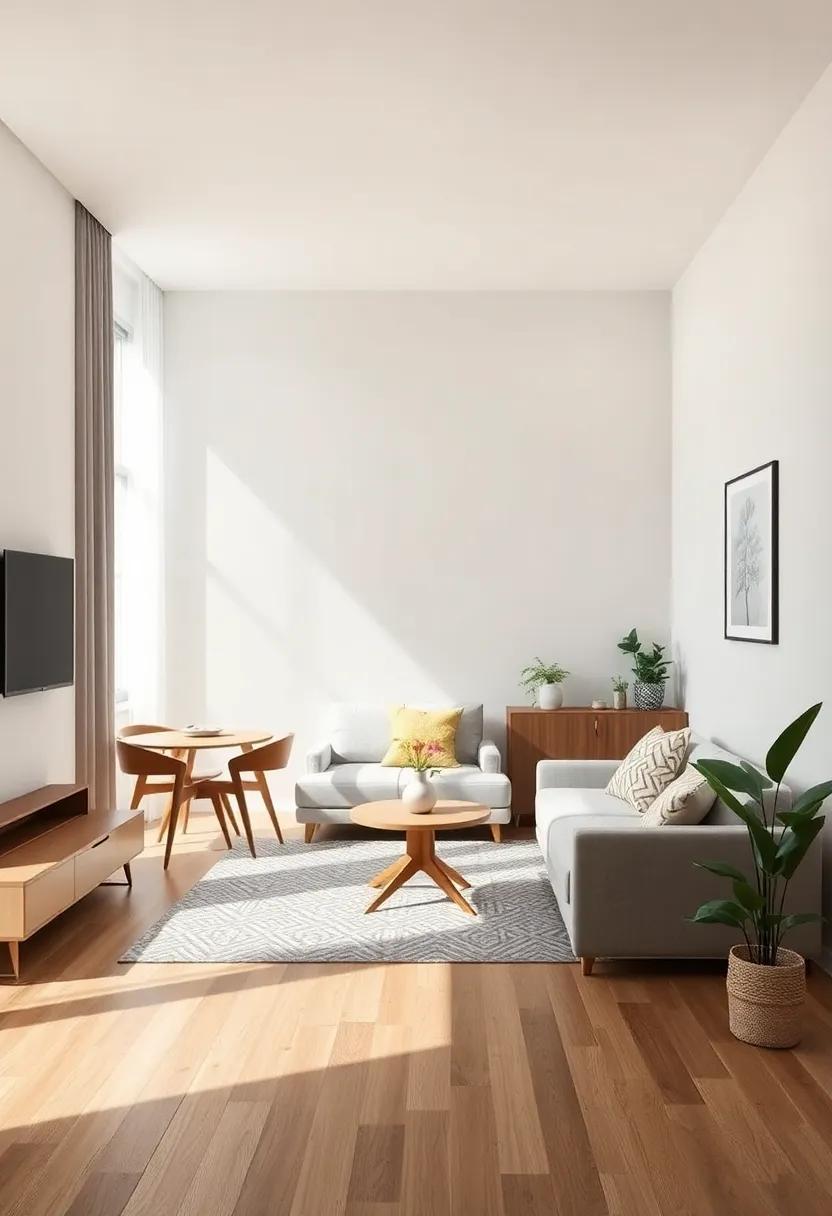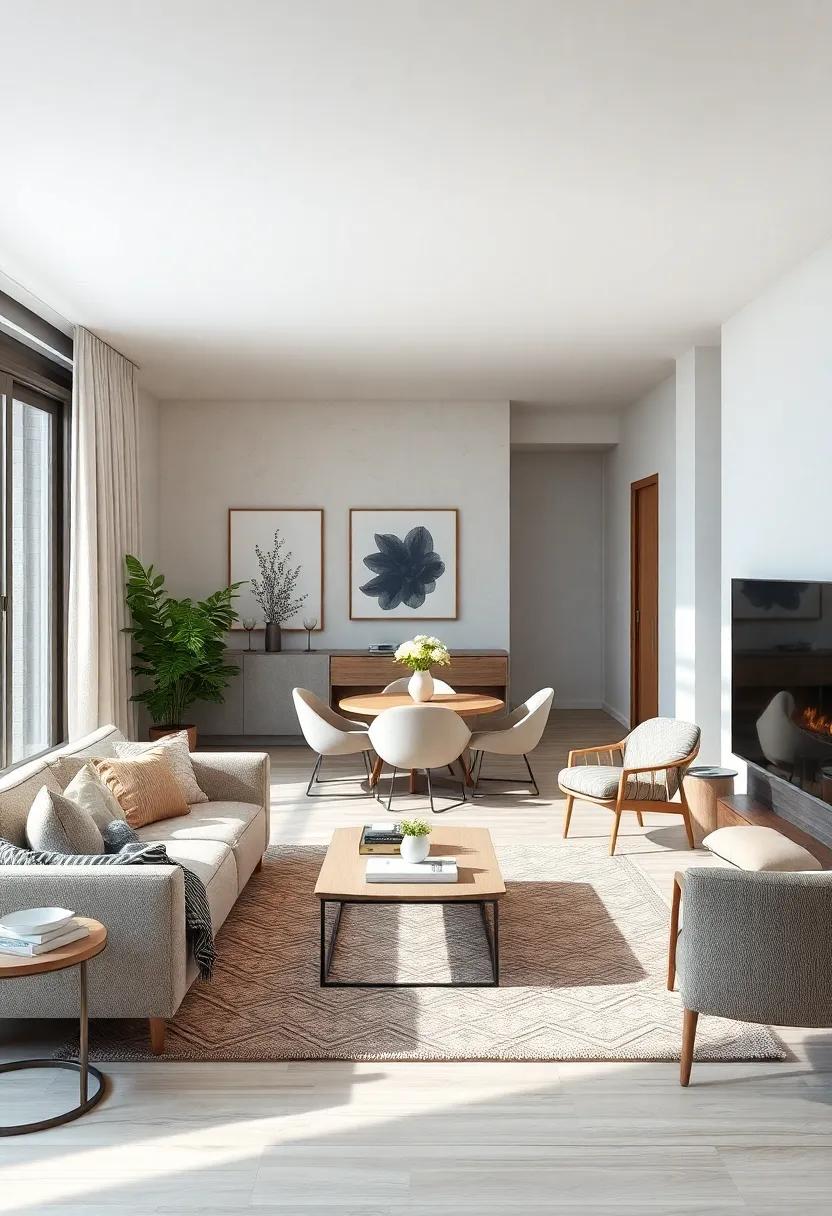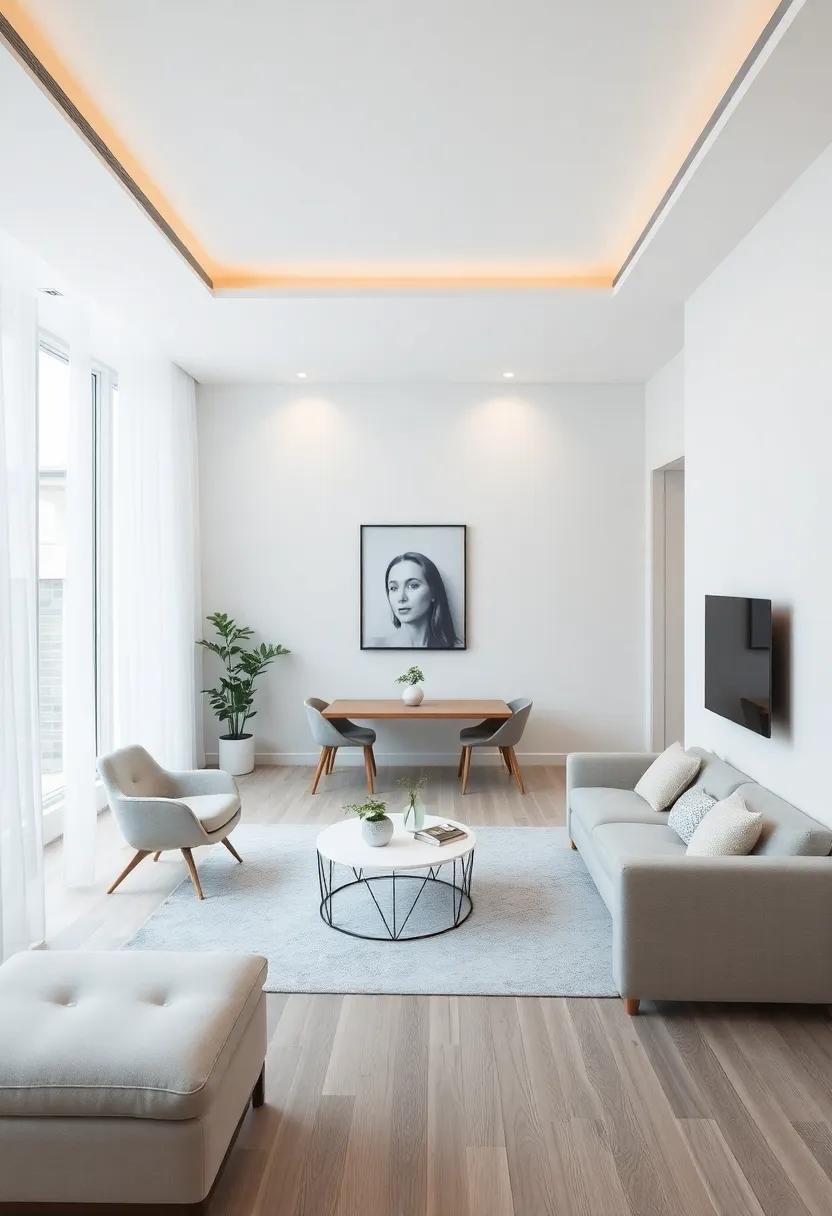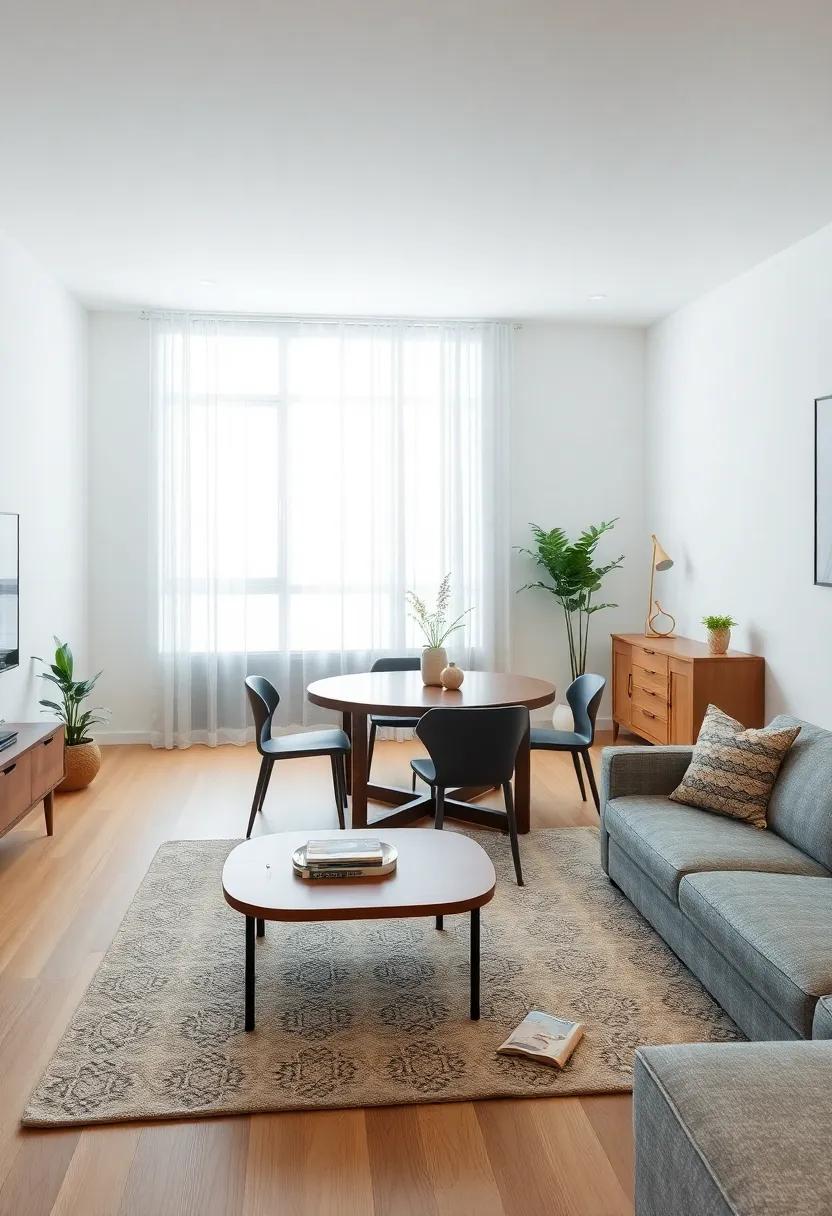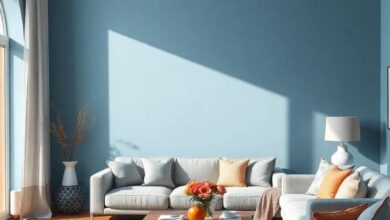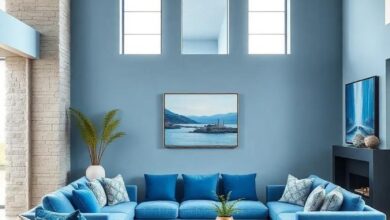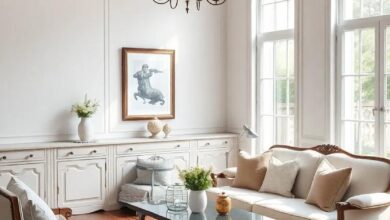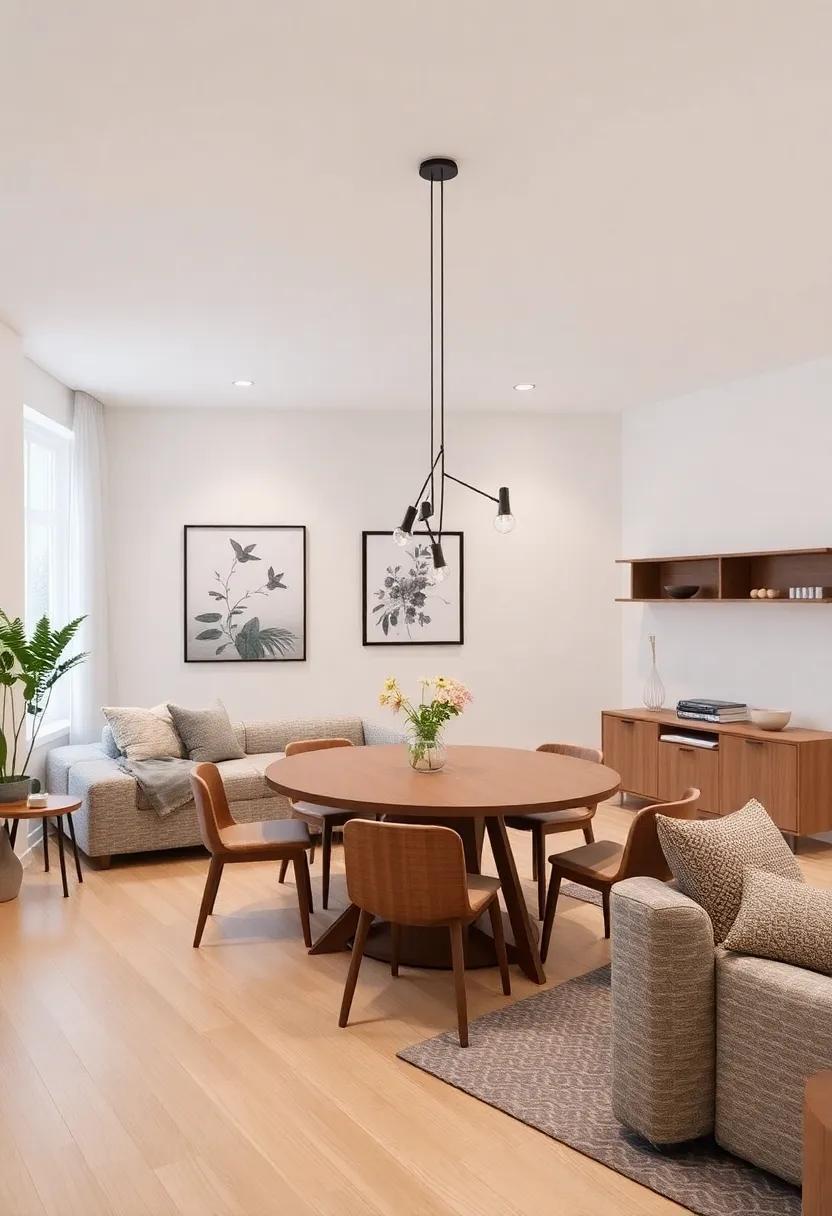
Maximizing Space: Creative Living Room Layouts with a Distinct Dining Area
In the heart of every home, the living room serves as the canvas for both relaxation and social interaction, while the dining area stands as a stage for shared meals and cherished memories. Yet, as our lifestyles evolve and living spaces grow more compact, maximizing the utility and aesthetic of these interconnected areas becomes essential. How do we transform a single room into a harmonious blend of comfort and functionality? In this article, we explore innovative living room layouts that seamlessly incorporate distinct dining spaces, turning everyday routines into delightful experiences. Whether you’re working with a cozy apartment or a more spacious home, prepare to discover creative strategies that will elevate your living habitat, optimize your space, and inspire your personal style. Let’s dive into the art of crafting living room layouts that celebrate both leisure and dining, proving that even the most modest spaces can offer a delightful sense of openness and purpose.
Maximizing Space Through Strategic Furniture Placement for Enhanced Flow
Creating a harmonious living space requires thoughtful consideration of furniture placement to enhance both functionality and flow. By strategically arranging your furniture, you can define separate areas for relaxation and dining without compromising on style. Here are a few tips to achieve this balance:
- Define Zones: Use rugs to delineate the living area from the dining area, creating visual separation while keeping the space cohesive.
- Focus on Traffic Patterns: ensure there’s a clear path between furniture pieces to facilitate movement, particularly between the living area and the dining zone.
- Scale and Proportion: Choose appropriately sized furniture that maintains balance within the space, avoiding overcrowding and fostering an inviting atmosphere.
Additionally, consider multifunctional furniture to maximize space utility. Items like coffee tables with storage or extendable dining tables can definitely help adapt your layout to accommodate gatherings or everyday use. Here’s a simple guide to help you visualize effective layouts:
| living area Layout | Dining Area Layout |
|---|---|
| Cozy sectional facing a focal point,paired with a stylish coffee table. | Round table that encourages intimacy, set near a window for natural light. |
| Single accent chairs on either side of a console for balance. | Bench seating along a wall to maximize space efficiency. |
Utilizing Multifunctional Furniture to Create a Dynamic Living Area
Leveraging multifunctional furniture is essential for transforming a traditional living area into a vibrant and efficiently organized space. By integrating pieces that serve multiple purposes, you can create an environment that adapts to your needs.Consider sofa beds that can easily switch from lounging to sleeping arrangements, or ottomans that double as storage units. This versatility allows homeowners to redefine their spaces continuously, offering an inviting area for entertainment and relaxation without compromising on practicality. Popular choices include:
- Convertible coffee tables that can expand to dining sizes, perfect for hosting friends.
- Wall-mounted desks that fold away when not in use, freeing up floor space.
- Nested tables that can be separated or combined based on your needs.
Moreover, maximizing vertical space is a smart approach to incorporate multifunctional elements effectively. utilizing wall shelves not only adds storage but also displays decorative pieces, enhancing the aesthetic appeal of the room. to further define your living area from the dining space, consider strategic furniture placements and area rugs. By establishing designated zones without physical barriers, you maintain a sense of openness while ensuring functionality. Below is a simple matrix highlighting ideal configurations:
| Furniture Type | Functionality | Ideal Placement |
|---|---|---|
| Sofa Bed | Seating & sleeping | Against the wall or center for fluidity |
| Dining Bench | Seating & Storage | Against the wall or under the table |
| Expandable Dining Table | Dining & Workspace | Center stage for easy accessibility |
Embracing Open-Concept Designs to Blur the Lines Between Spaces
Open-concept designs foster a harmonious environment by seamlessly integrating different areas of your home, particularly in the living and dining spaces. This design philosophy encourages a flow of movement and interaction, which can uplift the overall atmosphere of your home. By utilizing elements like large sliding doors, decorative room dividers, or even strategically placed furniture, you can create distinct areas that maintain a sense of togetherness.Some of the benefits of an open layout include:
- Enhanced natural lighting
- Improved social interaction
- Increased functionality
- Visual spaciousness
Incorporating creative layouts with distinct dining spaces within an open-concept design allows for versatile functionality without sacrificing style. Consider using a long dining table as an anchor piece with layered lighting above to designate the dining area from the living zone. Area rugs can also be a powerful tool to visually separate these spaces, creating a cozy ambiance. here’s a swift comparison of various layout options you might explore:
| Layout Type | description | Pros |
|---|---|---|
| Linear | One long table extending through the space. | Maximizes table length and facilitates conversation. |
| Corner Nook | Table tucked into a cozy corner with booth seating. | Intimate setting with space-saving benefits. |
| Floating Dining | Table placed in the center with surrounding seating. | Encourages movement and visual interaction between areas. |
Selecting Color Schemes that Harmonize Living and Dining Areas
Creating a coherent color scheme between your living and dining areas can considerably enhance the overall ambiance of your home. to achieve harmony, consider the following elements:
- Complementary Colors: Use colors that enhance one another. For example, a soft blue in the living room can be paired with a warm sandy beige in the dining area.
- Accent Colors: Incorporate accents that bring your space together.Accessories like cushions, art, and tableware can use a shared bold color accent.
- Continuous Palette: Choose colors that flow seamlessly from one area to another, helping to visually expand the space.
Another effective strategy is to utilize the size and shape of your areas to inform your color choices. If your dining area is smaller, opt for lighter shades to make it appear more spacious. Consider the following table for a quick reference on color pairings:
| Primary Color | Complementary Accent |
|---|---|
| Soft Gray | Brushed Gold |
| Seafoam Green | Coral Pink |
| charcoal Blue | Mustard Yellow |
By thoughtfully selecting your colors based on these concepts, you can create an inviting, well-integrated atmosphere that enhances the functionality and aesthetic of your living and dining areas.
Incorporating Dividers to Define Spaces Without Sacrificing Openness
one of the best ways to create distinct areas in an open-concept living space is by using dividers that serve both functional and aesthetic purposes.These can take various forms, such as bookcases, decorative screens, or even plants. By selecting transparent or semi-transparent materials, you can ensure that light flows freely through the space while still delineating where the living area transitions into the dining zone. Here are a few options to consider:
- Open Shelving Units: These allow you to showcase books or decorative items while acting as a subtle division.
- Glass Partitions: A sleek option that maintains a sense of openness while providing necessary separation.
- indoor Plants: Tall plants can act as a natural divider, adding greenery and life to your space.
To optimize the effect of your dividers, think about creating a layered layout that reflects both style and function. Consider a lightweight, folding screen that can be adjusted based on your needs, whether for entertaining guests or creating a more intimate setting for family meals. Additionally, color and texture play vital roles in ensuring that your space feels cohesive. Use a table below to visualize how different divider styles can impact the overall aesthetic:
| Divider Type | Effect on Space | Best Used With |
|---|---|---|
| Open Shelving | Creates visual interest and depth | Modern or minimalist spaces |
| Glass Partitions | Maintains light and airiness | Contemporary designs |
| Plants | Adds a natural element; softens edges | Eclectic or bohemian styles |
Creating Visual Interest with Area Rugs for Distinguishing Zones
Area rugs serve as powerful tools in defining and harmonizing different zones within a living space, particularly in an open-concept layout that merges the living room and dining area. By strategically placing rugs, you can create a visual boundary that not only delineates these spaces but also adds warmth and texture. Consider using bold colors or intricate patterns to highlight your dining area, contrasting it against a more subdued rug in the living area. This not only draws attention to each zone but also helps to unify elements of décor while ensuring each area feels distinct and inviting.
When selecting area rugs, keep in mind the following elements for optimum impact:
- Size: Ensure the rug is proportionate to the furniture it anchors, allowing for harmonious balance.
- Material: For the dining area, choose durable, easy-to-clean materials that can withstand spills and foot traffic.
- Color Scheme: Opt for colors that complement both the living room and dining area, enhancing cohesion.
To visualize these ideas, consider the table below which lists suggested rug placements:
| Zone | Rug Style | purpose |
|---|---|---|
| Living Room | Soft, Neutral | Create a cozy atmosphere |
| Dining Area | Vibrant pattern | Define space and invigorate design |
Innovative Lighting Solutions to Accent Distinct Living and Dining Areas
Transforming living and dining areas into stylish and functional spaces is an art that begins with the right lighting solutions. When strategically placed, lighting can draw attention to key features, enhance the ambiance, and create a seamless flow between areas. Consider pendant lights above dining tables to add a dramatic touch, while wall sconces can illuminate pathways and highlight artwork in the living space. Using dimmable options allows you to adapt the lighting mood to your needs, whether it’s a cozy family gathering or an elegant dinner party.
Layered lighting is essential for creating an inviting atmosphere. Integrating overhead fixtures, table lamps, and floor lights can add depth and texture to the decor. To further enhance the aesthetic appeal, explore options such as color-changing LED lights that can be adjusted to suit different occasions. An effective combination might include an eye-catching chandelier over the dining area paired with soft, warm floor lamps in the living area for contrast. With a thoughtful arrangement, light can accentuate the design elements and expand the perception of space.
Personalizing Your Space with Unique Art pieces and Accessories
Infuse your living room with character by selecting art pieces and accessories that resonate with your personal story. Artwork such as vibrant canvases or textured wall hangings can serve as striking focal points, while a well-placed gallery wall encourages a gallery-like atmosphere that always invites conversation. Additional elements—such as handcrafted pottery, vintage finds, or local artisan sculptures—add charm and help create a sense of place. Layering these pieces not only enhances visual interest but also allows you to explore different styles and textures, ultimately crafting a cozy haven that reflects your unique taste.
Consider incorporating accessories in unexpected ways to elevate your space.Decorative throw pillows and unique blankets can offer color pops and comfort, while an eclectic mix of coffee table books and personal trinkets creates a lived-in feel. Here are some ideas to inspire your accessory choices:
- Candles: Use various heights and sizes to create warmth.
- Indoor plants: Greenery brings life and freshness indoors.
- Mirrors: Strategically placed, they can enhance light and make the area feel larger.
By thoughtfully curating art and accessories, you not only enhance the aesthetic appeal of your living space, but you also make it a reflection of your individuality.
Adding Plants to Enhance Air Quality and Create cozy Corners
integrating greenery into your living room not only beautifies the space but also profoundly impacts the air quality. Consider adding plants such as snake plants, peace lilies, and spider plants which are known for their air-purifying qualities. These plants are low-maintenance and thrive in various lighting conditions, making them perfect companions for busy lifestyles. To create inviting corners, place these plants in decorative pots on side tables or hang them in macramé hangers near windows where they can soak up natural light.
To further enhance your cozy corners, think outside the box regarding plant arrangements. Mix various heights and textures by introducing a few tall floor plants, like a fiddle leaf fig, alongside smaller varieties. Establish a micro-garden by grouping plants together on bookshelves or window sills, utilizing attractive plant stands to elevate some species, creating visual interest.This layering effect not only enhances aesthetics but also brings a sense of balance and tranquility to your living space.
| Plant Type | benefits | Care Level |
|---|---|---|
| Snake Plant | Removes toxins | Low |
| Peace Lily | Improves humidity | Medium |
| Spider Plant | Air purifying | Low |
| Fiddle Leaf Fig | Visual focal point | Medium |
Incorporating built-In Shelving to Maximize Vertical space
When it comes to enhancing the functionality of a room without sacrificing style, incorporating built-in shelving is a game-changer. These custom fixtures make the most of vertical space, transforming empty walls into functional storage solutions. Consider these benefits of built-in shelving:
- Maximized Storage: Utilize every inch from floor to ceiling.
- Clean Aesthetic: Achieve a sleek, integrated look that blends seamlessly with your decor.
- Personalization: Tailor the design to fit your needs, from books to decorative items.
Integrating built-in shelving not only organizes your living area but also contributes to a cohesive design. When placing your shelves, think about positioning them above a console table or adjacent to your dining area, allowing easy access while enhancing the room’s visual appeal. Here’s a quick overview of different shelf styles you can consider:
| Style | Description |
|---|---|
| Open Shelving | Provides easy access and creates an airy feel. |
| Corner Shelves | Utilizes often-forgotten corners for additional storage. |
| Enclosed Units | Offers a clean look while protecting items from dust. |
Choosing the Right Size Dining Table for Comfort and Space Efficiency
When selecting a dining table that complements both comfort and space efficiency,consider the shape and size in relation to your living room layout. Rectangular tables work well for narrow spaces, while round tables can soften angular environments and promote conversation. To ensure you don’t overcrowd the area, maintain at least 36 inches of space around the table, allowing for easy movement of chairs and foot traffic. Remember to think about how many people you anticipate hosting; a table that expands or has removable leaves offers versatility without permanent commitment.
Additionally, the height of the dining table plays a meaningful role in creating a cozy atmosphere. Standard dining tables stand around 28-30 inches, but if you favor a more casual dining experience, consider a counter-height table that typically ranges from 34-36 inches.This kind of table frequently enough pairs well with tall stools and can create an inviting space for informal gatherings. Here are some key factors to help you decide:
- Room Dimensions: Measure the available space to determine the maximum dimensions for your table.
- Table Shape: Choose a shape that fits your layout while maximizing seating.
- Functionality: Decide if you need a table that expands for guests or remains compact for daily use.
Utilizing Mirrors to Create the Illusion of More space
Incorporating mirrors into your living space is a clever design trick that can dramatically enhance the perception of openness and visual flow. By strategically placing mirrors on walls opposite windows or light sources, you can reflect natural light, creating a brighter atmosphere that gives the illusion of an expansive area. Consider the following placements to maximize this effect:
- Across from Windows: Amplify sunlight by reflecting it inward.
- Angled Mirrors: Use angled designs to distribute light across corners.
- Feature Walls: Create a focal point with a large, decorative mirror.
Beyond light reflection, mirrors can also serve as functional design elements. Using mirrored furniture or decor can add depth to your living room and dining area, while subtly enhancing both aesthetics and space perception. When selecting mirrors, consider:
| Type of Mirror | Effect |
|---|---|
| Wall Mirror | Increases height illusion |
| Mosaic Mirrors | Adds texture and interest |
| Round Mirrors | Softens angular lines in the room |
Designing a Cozy Nook within Your living Area for Relaxation
Creating a tranquil nook in your living area can infuse habitual relaxation into your daily routine. Start by selecting a corner that receives ample natural light, such as near a window or a less-trafficked area of your living space. Equip this nook with a cozy chair, ideally in a soft texture or inviting color, to enhance its coziness. Consider incorporating a small side table where you can set your favorite book or a warm cup of tea. To further foster a serene atmosphere, layer soft throws and plump cushions to encourage lounging. Don’t forget to introduce ambient lighting: a stylish floor lamp or a string of fairy lights can add warmth and charm, transforming your nook into a personal retreat.
To personalize your cozy area,surround it with elements that speak to your personality and preferences. Use a mini bookshelf to house selected reads or cherished trinkets, showcasing your life’s stories while keeping the space organized. Adding greenery with small potted plants can breathe life into this corner, making it a refreshing escape.Consider hanging a piece of artwork that inspires you, or integrate a mood board that reflects your aspirations. By using a thoughtful blend of décor, comfort items, and functionality, your living area can evolve into a harmonious space that invites relaxation while still catering to the vibrancy of daily life.
Layering Textures and Fabrics for a Welcoming Atmosphere
Creating a warm and inviting atmosphere in your living space can be achieved through the clever layering of textures and fabrics. Incorporate a variety of materials such as soft throws, plush rugs, and woven baskets to introduce depth and character. Consider mixing natural fibers like cotton and linen with rich textiles such as velvet or wool to add visual interest. By playing with various finishes, you can balance the sleek look of modern furniture with the cozy feel of tactile accessories.
To further elevate the ambiance, think about using a selection of colors and patterns that harmonize with your overall design. A table, for instance, can host a stunning table runner alongside a vibrant centerpiece, creating a sense of continuity between the dining area and living space. Here’s a quick reference table for combining textures and colors:
| Texture | Color Palette |
|---|---|
| Woven Basket | Earth Tones |
| Velvet Throw | Jewel tones |
| Cotton Pillow | Pastels |
| Chunky Knit Rug | Neutral Shades |
experimenting with Layouts for a Balanced and Functional Design
Creating a harmonious living room with a distinct dining area involves strategic experimentation with layouts. Focus on functionality and flow, while ensuring comfort and aesthetics complement one another. Consider the following layout ideas:
- Open Concept: Integrate the living room and dining area by using area rugs to define spaces.
- furniture Grouping: Arrange sectional sofas in a U-shape to frame the dining space, creating an intimate setting.
- Mobility: Opt for lightweight furniture that can be easily rearranged to accommodate gatherings or daily activities.
Utilizing multi-functional furniture can also greatly enhance your layout. Consider pieces that serve dual purposes: coffee tables with storage, or dining tables that can expand for larger meals.Here’s a simple comparison of furniture types that can effectively maximize space:
| Furniture Type | Main Function | Dual Purpose |
|---|---|---|
| Coffee Table | Display & Relaxation | Storage & Dining surface |
| Dining Table | Meals | Work Surface & Game Table |
| Sofa Bed | Seating | Guest Sleeping Area |
optimizing Traffic Flow for Easy Movement Between Living and Dining Areas
To create a seamless transition between living and dining areas, consider incorporating open pathways that encourage fluid movement throughout the space. This can be achieved by placing furniture strategically to avoid obstructing natural sightlines. Elements such as floating furniture arrangements can help define each area without creating barriers, allowing guests to navigate comfortably.Key points to keep in mind include:
- Spacing: maintain at least 3 feet of clearance to ensure easy movement.
- Orientation: Arrange seating to face each other to promote interaction, while leaving pathways clear.
- Multifunctionality: Use furniture that can serve dual purposes, such as ottomans that provide seating while also being easy to move.
Another effective approach is to use visual cues like rugs or lighting to subtly delineate the living and dining spaces. This not only enhances the aesthetic appeal but also reinforces the distinct functions of each area. To maximize the efficiency of the layout, consider utilizing a table that complements the overall scale of the room. Here’s a simple guide:
| Table Shape | Best Room Size | Recommended Seating |
|---|---|---|
| Round | Small to Medium | 4-6 |
| Rectangular | Medium to Large | 6-10 |
| Square | Medium | 4-8 |
Bringing Natural Elements Indoors for a Refreshing Ambiance
Incorporating natural elements into your living space can profoundly enhance the ambiance, creating a fresh and inviting atmosphere. Consider introducing indoor plants that not only purify the air but also add a touch of greenery. Choose varieties like the snake plant, peace lily, or pothos, which are known for their low maintenance and air-cleaning abilities. Consider placing these plants in stylish planters that complement your decor while contributing to a sense of tranquility.
Additionally, natural materials such as wood, stone, and textiles can significantly elevate the aesthetic of your living area. Embrace wooden furniture or decor items made from reclaimed materials, as these bring warmth and character to the space. To further enhance the connection with nature, incorporate textiles in earthy tones or vibrant hues inspired by landscapes, such as soft green throws or warm beige cushions. This blend of elements not only creates a harmonious atmosphere but also offers a refreshing escape from the hustle and bustle of daily life.
Exploring Different Seating Arrangements for Creative Engagement
In the quest for a functional yet aesthetically pleasing living space, exploring various seating arrangements can significantly influence engagement and interaction among guests. U-shaped and L-shaped seating layouts cultivate a sense of togetherness, encouraging conversation while maximizing space. Incorporating modular seating options not only allows for flexibility but also adapts to different social settings,seamlessly transitioning from a cozy movie night to a lively dinner party.Additionally, accent chairs placed strategically at angles can create dynamic focal points, drawing attention to art pieces or a stunning view, thus enhancing the overall atmosphere of the area.
Another innovative approach is to designate distinct zones within the living room. Introducing multi-functional furniture such as ottomans that double as storage or side tables can help define the dining area while keeping the space open and inviting. Consider using a rug to delineate this area, visually breaking up the zones and providing a cozy feel.Pairing these elements with a carefully selected color palette can further harmonize the space. Below is a comparison of popular seating arrangements to help illustrate their unique benefits:
| Arrangement | Benefits |
|---|---|
| U-Shaped | Encourages conversation & engagement |
| L-Shaped | Maximizes corner space & flow |
| Modular | Flexible & adaptable to needs |
| Round Dining Set | Inclusivity & natural conversation flow |
Future Outlook
As we draw the curtains on our exploration of maximizing space within your living room while seamlessly incorporating a distinct dining area, we hope these ideas have sparked your imagination and inspired you to embrace your own unique layout.Remember, it’s not just about filling a space; it’s about creating an environment that reflects your style and enhances your lifestyle. Whether you lean towards a cozy corner setup or an open-concept arrangement that encourages flow and conversation, the beauty lies in the details and the choices you make. So,gather your furniture,channel your creativity,and let your living room evolve into a harmonious blend of comfort and functionality. Your ideal space awaits—now it’s time to bring it to life!
As an Amazon Associate I earn from qualifying purchases.
